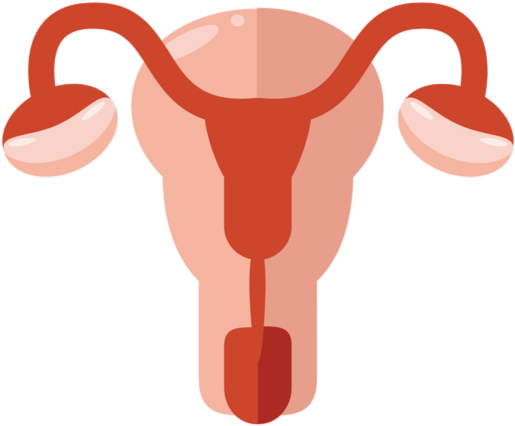Buy FLAGYL Online USA

Active Ingredient: Metronidazole
The drug Flagyl is produced by the French pharmaceutical company Haupt Pharma Livron. The active substance of the composition is metronidazole, which is known for its antibacterial action. Due to this component, the drug can be applied topically or systemically against various pathogenic bacteria and protozoa. The drug is not an antibiotic. Flagyl is used for treating certain bacterial infections of the vagina (bacterial vaginosis). Flagyl is an oral antiprotozoal and antibacterial.
What is Flagyl?
Flagyl ER belongs to the well-known group of metronidazole-containing antimicrobial therapeutic agents with increased efficiency and wide coverage that play essential roles among most currently approved agents with notable antimicrobial action. The medication has all the main characteristics of standard Flagyl save for one significant difference: ER stands for extended-release formula, which means that this particular formulation provides a prolonged curative effect.
The pharmaceutical agent demonstrates excellent results in the treatment of a wide range of severe infectious illnesses caused by gram-negative anaerobic cells and a large number of gram-positive anaerobic bacteria (including antibiotic-sensitive strains of the genera Eubacterium and Clostridium). It is also very efficient against such a dangerous infectious invader as Helicobacter pylori if administered in combination with amoxicillin (amoxicillin inhibits the development of bacterial resistance towards the medication’s active components)
Aerobic microorganisms and facultative anaerobes are completely insensitive to the bactericidal effects provided by the pharmaceutical antimicrobial agent. Nonetheless, the drug may be prescribed to treat such infections in patients with mixed bacterial flora (if the patients have a significant amount of both pathological aerobes and anaerobes). According to this clinical strategy, the medication acts synergistically with the medications that are effective against ordinary aerobic pathogenic strains.
Naturally, in order to both reduce the amplification of undesired bacterial resistance and decrease the chances of spreading resistant bacterial strains throughout the entire population of sensitive patients, treatment with the medication should be prescribed only in those patients that are proven to suffer from bacteria-induced infections.
How does it work?
The main active ingredient of the medication is metronidazole – a highly efficient derivative of 5-nitroimidazole responsible for the synthesis of active substances providing and maintaining inhibiting effects towards the synthesis of microbial DNA chains. The said derivative provides a reduction of the 5-nitro group with the help of intracellular transport proteins. Reduced metabolite affects the DNA basis blocking mitosis and, consequently, killing bacterial cells.

The active component of the medication is promptly and almost completely absorbed in the gastrointestinal tract (with an absorption rate that reaches approximately 80% in one hour after oral administration). Food intake does not affect the absorption rate of the drug. The standard bioavailability parameters of the medication reach 80%. The half-life of the active component of the medicinal agent is less than ten hours. The main active ingredient is metabolized mostly in kidneys (40-70%). Excretion of the drug’s components is also handled mainly by the kidneys: 35-65% of the administered dose is excreted in the urine in the form of oxidized metabolites.
Contraindications and general precautions
Since the medication provides a very impactful effect on microbial flora, including the normal bacterial population of the human body, it should be prescribed with care and only in those cases that require efficient antimicrobial agents with a broad spectrum of action. In addition, the therapy with the drug should be eschewed in the following cases:
- Hypersensitivity to any ingredient of the pharmaceutical preparation as well as to imidazoles and all derivatives of nitroimidazole
- Organic lesions of the central nervous system (including epilepsy)
- Leukopenia (including patients with the history of disease)
- Hepatic impairment (especially in patients that require therapy with increased doses of the drug)
- Pregnancy
- Breastfeeding women
- Children under 10 years old.
Since the simultaneous administration of the drug with alcohol may provide an effect similar to that of the drug Disulfiram (fever, vomiting, tachycardia, etc.), it is necessary to refrain from drinking throughout the entire course of treatment with the pharmaceutical antimicrobial agent.
Naturally, it is also necessary to carefully weigh the indications for long-term therapy with the drug and, simultaneously, try to eschew the long-term therapy without strict indications. If in case of strict indications for the prescription, the drug is used for a longer time than it is usually recommended, the treatment should be carried out under the scrupulous monitoring of hematological parameters and adverse reactions. If certain negative reactions are observed (paresthesia, ataxia, dizziness, seizures, etc.), the treatment should be regarded as dangerous and immediately discontinued.
Patients with severe, chronic or progressive diseases of the peripheral or central nervous system may be at risk of exacerbation of the neurological status.
In addition, women undergoing therapy against vaginitis caused by Trichomonas as well as men undergoing therapy against urethritis caused by Trichomonas should refrain from sex.
Interaction with other impactful pharmaceutical agents
Naturally, since the medication not only provides a direct impact on the quantitative content and the qualitative composition of the normal bacterial flora in the human body but also affects a series of metabolic pathways, it should be prescribed with care in patients that require continuous treatment with certain pharmaceutical agents. Though negative reactions that are regarded as associated with the medication are rather rare as for a wide spectrum antibiotic, the administration of the medication may be altered or discontinued. The most notable interactions of the medicinal agent include the following:
- Disulfur. It was reported that patients receiving both medications might develop serious psychotic reactions (the interval between administrations of these medications should be no less than two weeks).
- Ethanol. Simultaneous intake of both substances may lead to the development of severe negative reactions, including skin hyperemia, vomiting, tachycardia, etc.
- Indirect anticoagulants, such as warfarin. Coupled administration of these substances may lead to an increased anticoagulant effect and increase the hemorrhagic risk associated with deceleration of their hepatic metabolism, which may lead to an increase in prothrombin time. Concomitant administration of the said medications requires frequent monitoring of prothrombin time and, if necessary, correction of doses of anticoagulants.
- Lithium preparations. Co-formulated administration of these pharmaceutical preparations may increase the concentration of lithium in the blood. The concentrations of lithium, creatinine, and electrolytes in the plasma should be monitored if such therapeutic approach is approved.
- Cyclosporine. The serum concentration of cyclosporine may increase in case of combined therapy.
- Cimetidine. The substance inhibits the metabolism of the medication, which may lead to an increase in its concentration in the serum and raise the risk of severe side effects.
- Inducers of microsomal enzymes (phenobarbital, phenytoin, etc.). The co-formulated use of the curative substance with these drugs may accelerate its excretion, resulting in a decrease in its concentration in the plasma.
- Fluorouracil. The active ingredient of Flagyl reduces the clearance of fluorouracil, resulting in increased toxicity.
- Busulfan. The drug increases the concentration of Busulfan in the blood, which may lead to the development of severe toxic effects.
- Non-depolarizing muscle relaxants. It is not recommended to combine the medication with non-depolarizing muscle relaxants.
Possible negative symptoms of treatment
In general, the medication is considered well tolerated. It rarely promotes the development of side effects, provided, naturally, that it is taken in strict adherence to the physician’s prescriptions, the established therapeutic regiment is not violated, and the curative period is not unnecessarily prolonged or reduced.
The commonly observed negative reactions include the following:
- Insignificant and/or poorly manifested disorders of the gastrointestinal tract (pain in the epigastrium, nausea, vomiting, diarrhea, etc.)
- Stomatitis, taste disorders, anorexia
- Mycosis
- Hyperemia, itching, rash, fever
- Angioneurotic edema, anaphylactic shock
- Very rare cases of acute generalized exanthematous pustulosis
- Extremely rare clinical cases of toxic epidermal necrolysis
- Stevens-Johnson syndrome
- Peripheral sensory neuropathy
- Headache, dizziness, seizures
- Aseptic meningitis
- Encephalopathy
- Dysarthria, tremor
- Hallucinations (though seldom observed)
- Psychotic reactions associated with paranoia and/or delirium, which in rare cases may be accompanied by suicidal thoughts and/or suicide attempts
- Depressive mood
- Temporary visual impairment, diplopia, myopia
- Agranulocytosis, neutropenia, thrombocytopenia
- Increased levels of liver enzymes (AST, ALT, alkaline phosphatase)
- Very rarely reported cases of acute hepatitis
- Hearing impairment/ loss of hearing
In addition, after the administration of the first dose of the drug, patients may experience psychotic reactions, especially in individuals with a history of mental disorders. In such cases, the treatment with Flagyl should be considered hazardous and immediately discontinued.
Overdose
In compliance with the clinical experience, there are documented cases of overdose to suicidal attempts. After accidental overdose ataxia, vomiting, and slight disorientation may be observed. Since the specific antidote capable of reducing the toxic effects of the pharmaceutical agent is not known, symptomatic therapy is recommended.
In general, the rate of plasma protein binding of the medication is negligible (less than 20% of the active ingredient merges with the said proteins). The medication is also characterized by rapid and significantly manifested diffusion in the lungs, kidneys, liver, bile, cerebrospinal fluid, skin, and saliva and vaginal. For this reason, the medicinal agent demands special care in case of accidental drug abuse. In general, the maximum duration of treatment with Flagyl should not exceed ten days with the maximum permitted the number of approved courses of treatment not exceeding 2-3 times per year.
What is Vaginitis?
Vaginitis is a medical term used to describe a large group of specific inflammation processes of the vagina that are usually caused by bacteria or yeasts. As for the term vulvovaginitis – it refers to the inflammation of the vagina and vulva. Although these diseases may seldom develop because of irritation caused by various chemicals components of creams and sprays, or because of physical contact with clothing in the genital zone, they are usually caused by various pathogenic bacteria.

Both the quantitative content and the qualitative composition of the microflora of the vagina are subject to diverse exogenous and endogenous effects, such as impaired endocrine system activity, invasive therapeutic/diagnostic gynecological manipulations, systemic and topical administration of antimicrobial medications, etc. The reduced amount of prolific lactic bacteria (Lactobacillus spp.) in most circumstances leads to the dissemination of microorganisms that are usually present in the vagina in small quantities (predominantly anaerobic species) and/or colonization of the vagina with opportunistic transient microorganisms. Increased populations of the said bacteria in the vagina cause bacterial vaginitis.
What are the most common symptoms?
Naturally, the most manifested symptoms of these diseases may differ depending on the cause of the infection. In some cases, the illness develops without any notable symptoms so that the first phases of the disease may be detected exceptionally via microbiological studies.
The most commonly observed symptoms of vaginitis include:
- Burning sensations during urination
- Pathological vaginal discharge with an unpleasant smell
- Itching
- Discomfort during sexual intercourse
It should be noted that normal vaginal discharge is considered a small amount of transparent or whitish discharge without a strong odor. If you suffer from at least one of the abovementioned signs, then, as a general recommendation, it is necessary to refrain from sexual activity and seek medical advice as soon as possible. After the examination and the necessary tests, the physician will prescribe you a treatment appropriate for the type of infection that causes the inflammation.
What are the most common types of vaginal infections?
As of today, all types of vaginal infections are categorized into six groups as follows:
- Bacterial vaginitis that is observed in more than 50% of all women that seek medical advice because of vaginal inflammation.
- Candidiasis that is observed in about 25% of clinical cases.
- Nonspecific vaginitis, which develops as a result of contamination with staphylococci, streptococci, enterococci, protozoa, or Pseudomonas aeruginosa.
- Trichomoniasis, which is the most common pathological condition among vaginal inflammations caused by sexually transmitted diseases.
- Viral vaginitis that is mostly represented by herpes infection spread via sexual contact.
- Specific vaginitis caused by sexually transmitted infections (gonorrhea, chlamydia, herpes).
Although each of these vaginal infections may manifest its development via different symptoms, it is not always easy to determine the exact type of the disease especially at the early stages of the illness. Correct diagnosing becomes even more difficult in case of simultaneous contamination with several infectious agents.
How to treat vaginal infections?
The crucial element of the effective and fast treatment of the said infectious diseases is the correct diagnosis. Unfortunately, most symptoms caused by these infections are rather nonspecific. In addition, simultaneous contamination with several infectious agents, and/or accumulated impact provided by several pathological factors raise the level of sophistication in diagnosis. For this reason, self-therapy is not recommended in order to eschew the further development of negative reactions, some of which may be very hazardous and irreversible, and provide ground for a rapid restoration of normal vaginal microflora.
Since different types of bacterial vaginitis have different causes, efficient curing strategies are specific for each type of disease.
Non-infectious vaginitis should be treated by eliminating the factors responsible for its development. In most cases, such factors include chemicals included in soap, laundry detergents, vaginal sprays, douches, sanitary napkins, tampons, etc.
If vaginitis is caused by hormonal changes, estrogen therapy may be prescribed to reduce the symptoms.
Efficient preventive measures
Although the abovementioned diseases are comparatively widespread, a large portion of the said disorders may be prevented through the use of a simple set of precautionary measures. In order to prevent most vaginal infectious diseases it is necessary to adhere to the following recommendations:
- Keep to a healthy balanced diet
- Wear loose clothing made from natural fabrics (cotton, linen, silk, etc.)
- Eschew wearing extremely tight panties
- It may be necessary to reduce the use of female deodorant or deodorized tampons in case of irritation caused by chemical substances present in the said products
- Eschew extremely hot baths
- Use condoms
- Eat food containing an increased amount of lactic bacteria
- If you suffer from diabetes, keep your blood sugar levels close to normal
- If you often suffer from fungal infections, you need to seek medical advice in order to both determine the factors causing repeated contaminations and optimize your lifestyle in order to prevent their further development
- Regularly undergo gynecological examinations.
In addition, it is necessary to reduce the impact of various factors that tend to increase the risk of said infections. The most common factors that raise the risk of these diseases include the following:
- Recent treatment with effective antibiotics with a broad spectrum of action. Prolonged antimicrobial therapy may damage normal vaginal microflora reducing the number of “friendly” bacteria and, consecutively, changing vaginal pH and providing pathogenic bacteria with vacant niches.
- Diabetes. The excessive sugar may be excreted with urine and vaginal discharge. This leads to significant changes in the proportion of vaginal bacteria, often aiding the development of yeasts.
- Pregnancy. Although pregnancy is a completely natural and, in most cases, nonhazardous process, it drastically changes hormone levels that control all biochemical and physiological parameters of the vagina. In some cases, pregnancy may promote the development of vaginal infections.
- Oral contraceptives (birth control pills). The said contraceptives provide a direct impact on the hormone levels, changing the content of bacterial biofilm.
- Diseases that affect the immune system. Decreased effectiveness of the immune response promotes the development of pathologic microbial agents in all organs of the human body.
- Thyroid disease or endocrine disorders.
- Allergic reactions.
- Corticosteroid therapy.

